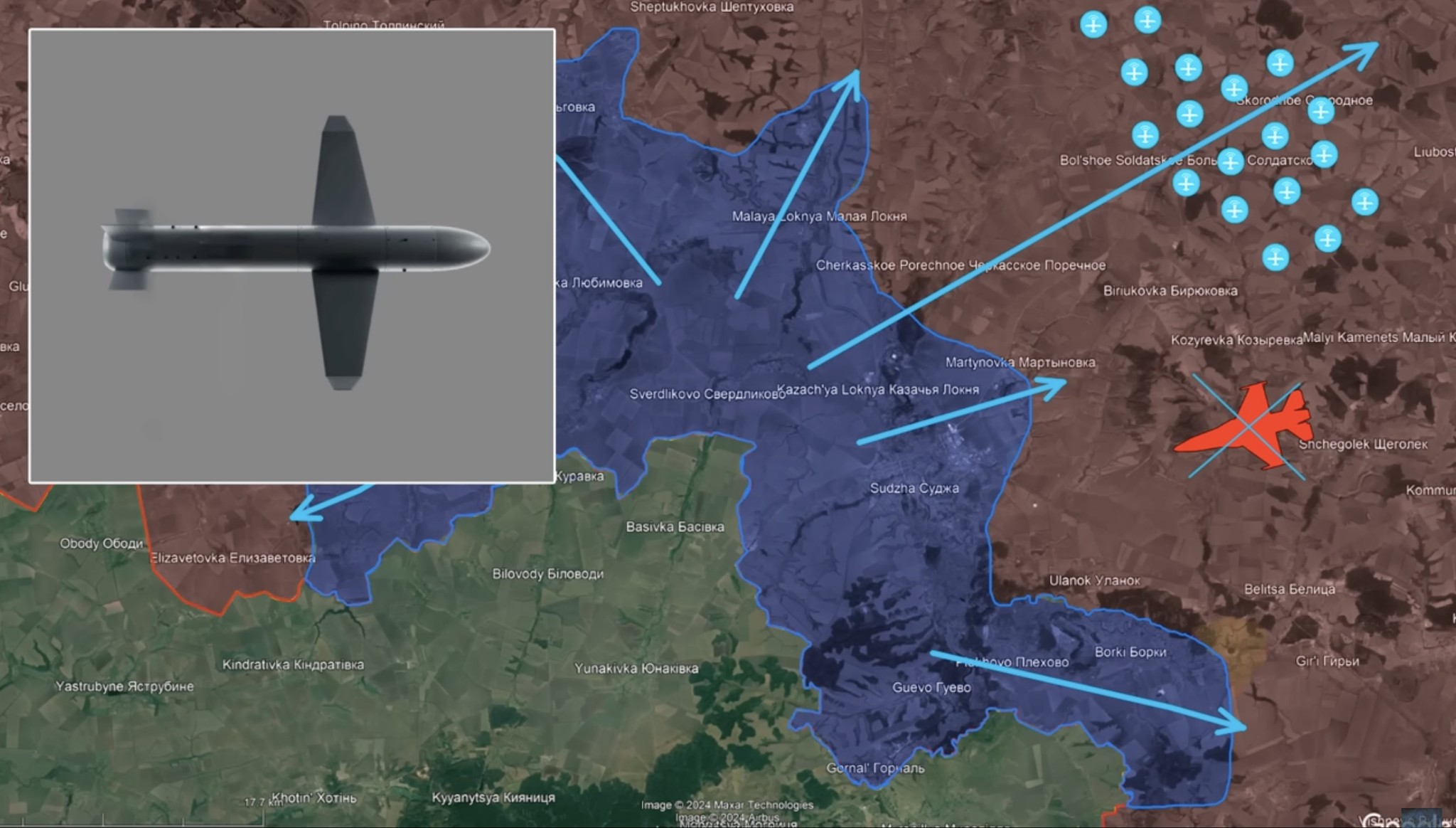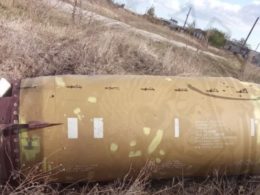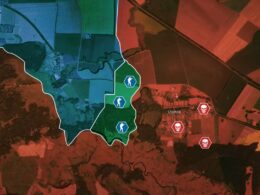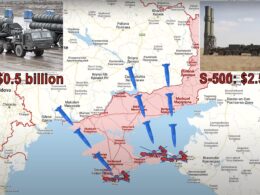Today there are a lot of updates from the Kursk direction, Russia.
Here, while successfully continuing their offensive in this region, the Ukrainian armed forces conducted a series of strikes against Russian airfields and ammunition depots deep into enemy territory. These strikes not only aimed to achieve a strategic impact but also amplify the ongoing ground operations by giving respite from Russian bombardments.
To boost their efforts even more, Ukrainians used their newest domestically developed weapon that has the potential to become a game changer and is already causing Russians a lot of new problems.
New Ukrainian-produced weapon Palianytsia
On Ukraine's Independence Day, President Volodymyr Zelenskyy officially unveiled the latest advancement in the nation's military technology: a new strategic weapon named Palianytsia.
While military experts noted the ongoing blurring of distinctions between various types of armaments, they emphasized that the Palianytsia functions more as a cruise missile than a drone.
This missile drone is highly maneuverable, equipped with a jet engine and a powerful warhead, enabling it to strike long-range targets, including 20 previously unreachable Russian military airfields.
President Zelenskyy announced that the Palianytsia had already been deployed in a recent strike, targeting key Russian military infrastructure. The strike was part of Ukraine's immediate objectives to weaken Russian defensive operations in the Kursk region and reduce offensive capabilities toward the Kharkiv region.
The initial strike targeted a large military warehouse complex in Russia's Voronezh region. According to Russian witnesses, the sound of a jet engine from an unidentified aircraft was heard just before the attack, as it approached the intended target.
Several geolocated videos quickly emerged, capturing the large fires that erupted following the explosions. The next day, satellite images provided a clearer picture of the extensive devastation inflicted on the impact area by this new Ukrainian weapon.
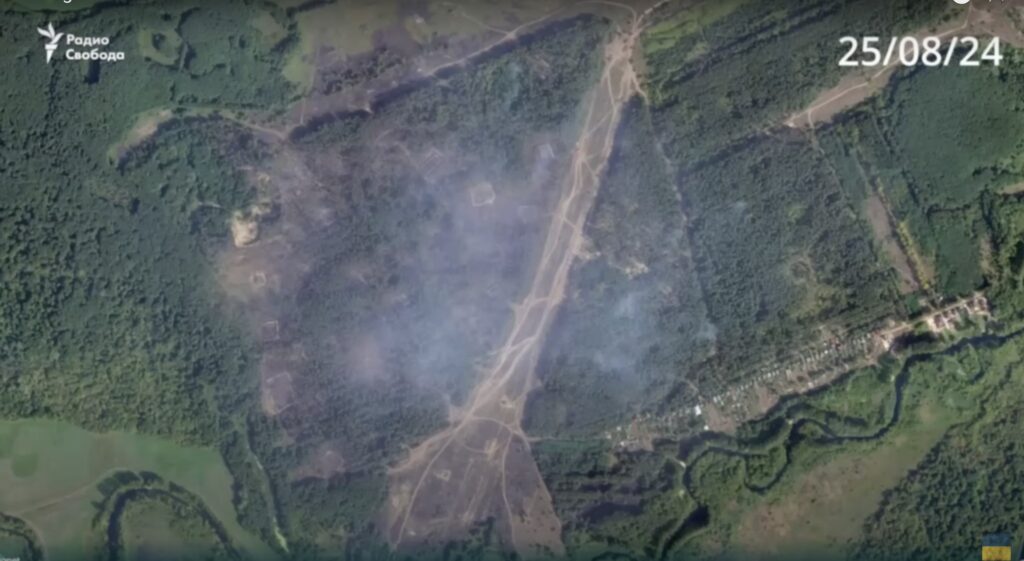
It is expected to be deployed in large quantities, as it is cheaper and easier to produce than the Neptune anti-ship cruise missile, which the Ukrainians have already successfully adapted for other uses.
Notably, these new drones do not explode upon impact but instead detonate as they approach their targets. This approach was developed to maximize the destructive potential of cluster munitions, as mid-air explosions significantly expand the area of damage, as evident in the released images.
Substitute for ATACMS that are restricted for long-range strikes
As a result, a swarm of these drones can effectively substitute for ATACMS missiles, which are restricted from being used deep within Russian territory. Flying at speeds exceeding 400 kilometers per hour, these drones offer a formidable alternative for traditional long-range munitions.
This Ukrainian operation followed a series of highly effective strikes against targets in the Volgograd and Krasnodar regions in the preceding days. Sources within Ukraine’s Security Service revealed that they successfully targeted several warehouses stocked with glide bombs and fuel at the Marinovka airfield in Volgograd Oblast.
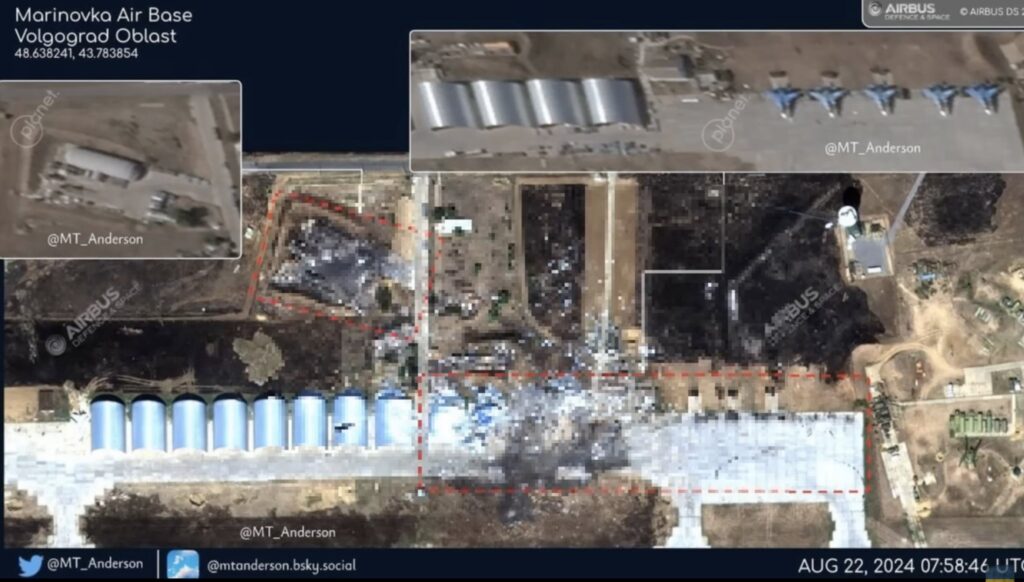
According to these sources, the Russian aircraft stationed there had been actively involved in bombing Ukrainian frontline settlements and positions. The strike triggered numerous secondary explosions in the warehouses. Geolocated footage captured plumes of smoke and explosions, while satellite imagery confirmed significant damage to the hangars housing Su-34 fighter jets.
Trending Now
Reports later indicated that at least one aircraft was destroyed, and several others sustained severe damage due to the type of ammunition used by the Ukrainians.
Ukrainian attacks on Russian military bases cause decrease in Russian strikes
The recent Ukrainian attacks have led to a notable decrease in Russian strikes and overall aviation activity over the past several days, with the number of daily glide bomb strikes in the Kursk region dropping by half compared to the previous week.
This shift in dynamics has provided significant advantages for Ukrainian forces. Russian military analysts have raised concerns, warning that the Ukrainian army is continuing to amass personnel and equipment in several key areas within the region, including near Tetkino, just south of the border near Sudzha, and to the north.
These strike groups, which are typically vulnerable to bombardment during their formation, have become a priority target for Russian aviation. However due to the damage inflicted by Ukrainian strikes on Russian airfields these Ukrainian forces are now able to prepare in relative safety for a new offensive aimed at capturing the entire 700 square kilometer Glushkovo area.
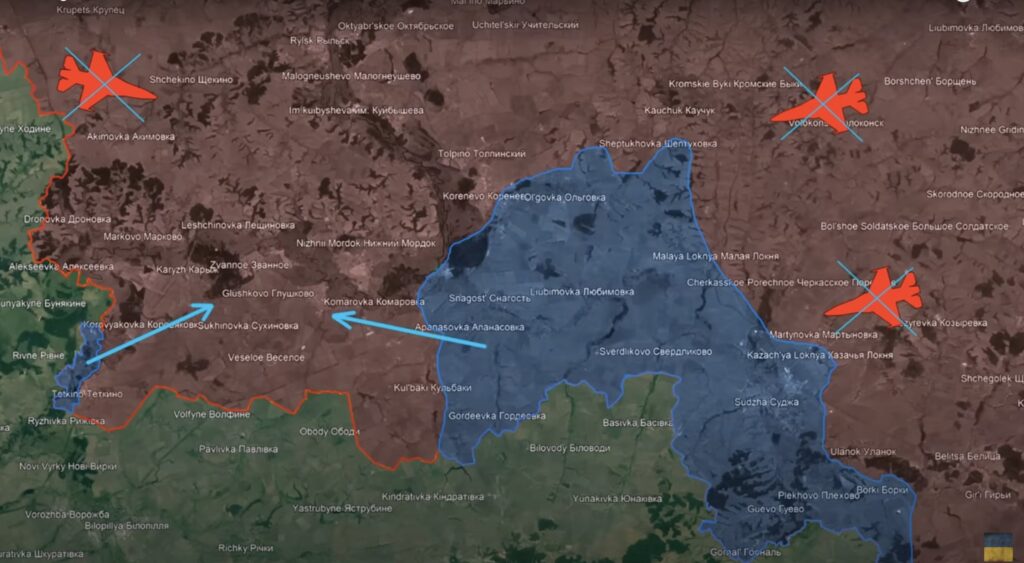
The reduction in Russian bombardments also allows Ukrainian forces to easily fortify their positions within the Kursk region, which will ultimately make it even more challenging and costly for the Russians to push them back beyond the international border.
Overall, Ukrainians continued their efforts to weaken Russian military capabilities by targeting key enemy airfields and warehouses with various long range weapons.
These calculated strikes had an immediate impact in the Kursk region, providing crucial support to Ukrainian ground operations during a critical transition to the second stage of their large-scale offensive inside Russia.
Ukrainians achieved this by introducing their latest innovation, a new type of drone that is not only unrestricted by Western prohibitions on use within Russia but also employs a more effective method for targeting key infrastructure and equipment with cluster munitions.
In our regular frontline report, we pair up with the military blogger Reporting from Ukraine to keep you informed about what is happening on the battlefield in the Russo-Ukrainian war.

